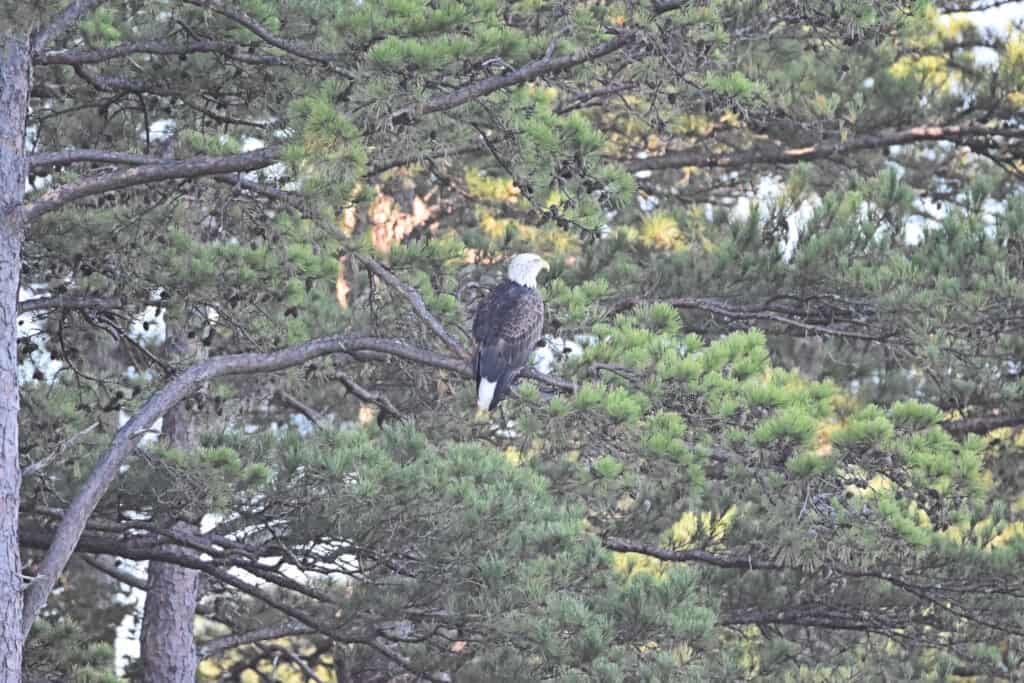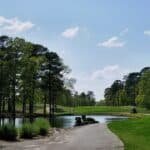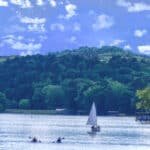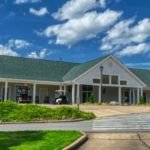Chief Ricky Middleton HSV Police Department
Emily Stubblefield Gives American Bald Eagle Presentation

Emily Stubblefield, Park Interpreter II at the Lake Ouachita State Park gave a presentation on the American Bald Eagle on April 12, 2022, at Hot Springs Village Coffee with the Police Chief Meeting.
Stubblefield said the American Bald Eagle is a bird of great resiliency which has great value to the American public and is a symbol of natural pride.
“For a bird of that size, they only weigh eight to twelve pounds with a wingspan of seven to seven and a half feet which is taller than an average man who has a height of six feet tall.

People often find it surprising that one of the American Bald Eagles’ food sources is carrion (dead animals). “They are opportunists.”
Typically, the eagles are monogamous, but a relationship was documented where one male was in a relationship with two females. The preferable nesting site is on the top of dead pine trees. They like to use the same nest, year after year, adding to it which can make a very heavy nest of thousands of pounds. A record-size nest was found in Florida, weighing a ton.
The juveniles do not look the same as the adults. It takes five years before the juvenile develops the adult markings of a full white head and tail and the dark brown/black wings.
The average clutch is one to three eggs. Not every eagle comes to this area to start a family. “Sometimes they just come to snowbird and have a vacation.”
“The incubation period is very short – only 35 days.” In captivity, the American Bald Eagle can live up to 40 years, but in the wild, the average life span is only 20 years.
On a daily basis, they travel anywhere from 70 to 125 miles a day.

History/Background
In 1776 some coins started being minted with the image of the Bald Eagle.
In 1872 the Bald Eagle was added to our National Seal. Originally it was going to be the Gold Eagle. Because there are Gold Eagles in England, the US went with the Bald Eagle, not wanting to be anything like England.
Eagle Numbers Dwindled – Protective Legislation Was Passed
In the 1900s, the Lacey Act was passed for the preservation of wild birds.
In 1917 the Bald Eagle was becoming a nuisance to small game and livestock in Alaska. This situation led to the government giving a bounty of fifty cents for every eagle killed. Not too long after that, the bounty was increased to $1.00 an eagle, resulting in over 120,000 confirmed eagle deaths. This kill-off resulted in only 417 eagle nesting pairs remaining in the lower 48 by 1963.
The Bald Eagle Protection Act of 1940 prohibited anyone without a permit issued by the Secretary of the Interior from taking any part of a bald eagle, which included their feathers, nests, or eggs.
Additionally, in 1948 the emergence of DDT, used in gardens as a insecticide, led to another mass die-off of the eagle. In the ’50s and ’60s, the government started regulating the purchase and use of DDT because of evidence that there were negative environmental effects associated with the use of DDT.
DDT was banned in 1972. The experts found that hawks, owls, ospreys, and eagles had a high concentration of DDT in their systems and this led to soft eggshells. The baby birds could not develop leading to a great reduction in reproduction.
The American Bald Eagle was one of the first species to be put on the Endangered Species Act list, which was passed in 1973 This act allowed different organizations to begin working together and also to receive federal grant money.
The Comeback of the American Bald Eagle
The passing of the various legislative acts aided in the population of the American Bald Eagle recovering.
In 1999, it was proposed to remove the American Bald Eagle from the Endangered Species list. In the past 30 years, the Bald Eagle population has essentially doubled. Stubblefield said this is impressive.
But then tragedy struck again. By 1996, several eagle deaths with no obvious cause were found. State and federal agencies worked together to determine the cause and it was discovered that they all had microscopic lesions in their brains. “The brain lesions were causing the birds to act abnormally.” The eagles were exhibiting various strange and dangerous behaviors, such as flying into the dead pines, instead of landing in their nests. This led to a number of eagle deaths.
It was discovered that when the bald eagle ate coots, they were ingesting a toxic bacteria that the coots had ingested from eating hydrilla. This bacteria comes from blue-green algae that grow on the hydrilla plants.
In order to combat the hydrilla, sterile grass-eating carps were introduced to the lakes to combat the hydrilla.
Stubblefield shared, “Today Lake Ouachita has a healthy eagle population with a handful of nests around the lake.” It is difficult to count the actual eagle population because they do have such a large daily travel range.
Stubblefied gives Eagle Tours at Lake Ouachita State Park. Click here to read about her tours and for more details call the park at 501-767-9366.
Cheryl Dowden, HSV Gazette, April 16, 2022
* * *
We are glad you dropped in to visit Hot Springs Village People Gazette. If you like, please comment below; we love to hear your opinions. Thank you for keeping the comments polite and on topic. Please use your first and last real name. We promote local businesses, events, and organizations! Let us know if we can help. We also accept opinion pieces and articles from guest authors. We can be contacted through this website; just click the contact button and let us know what’s on your mind. Be sure to bookmark this site and come back to visit with us often as our content is frequently changing. If you are an HSV Property Owner, click here to visit and join a private Facebook Group.











